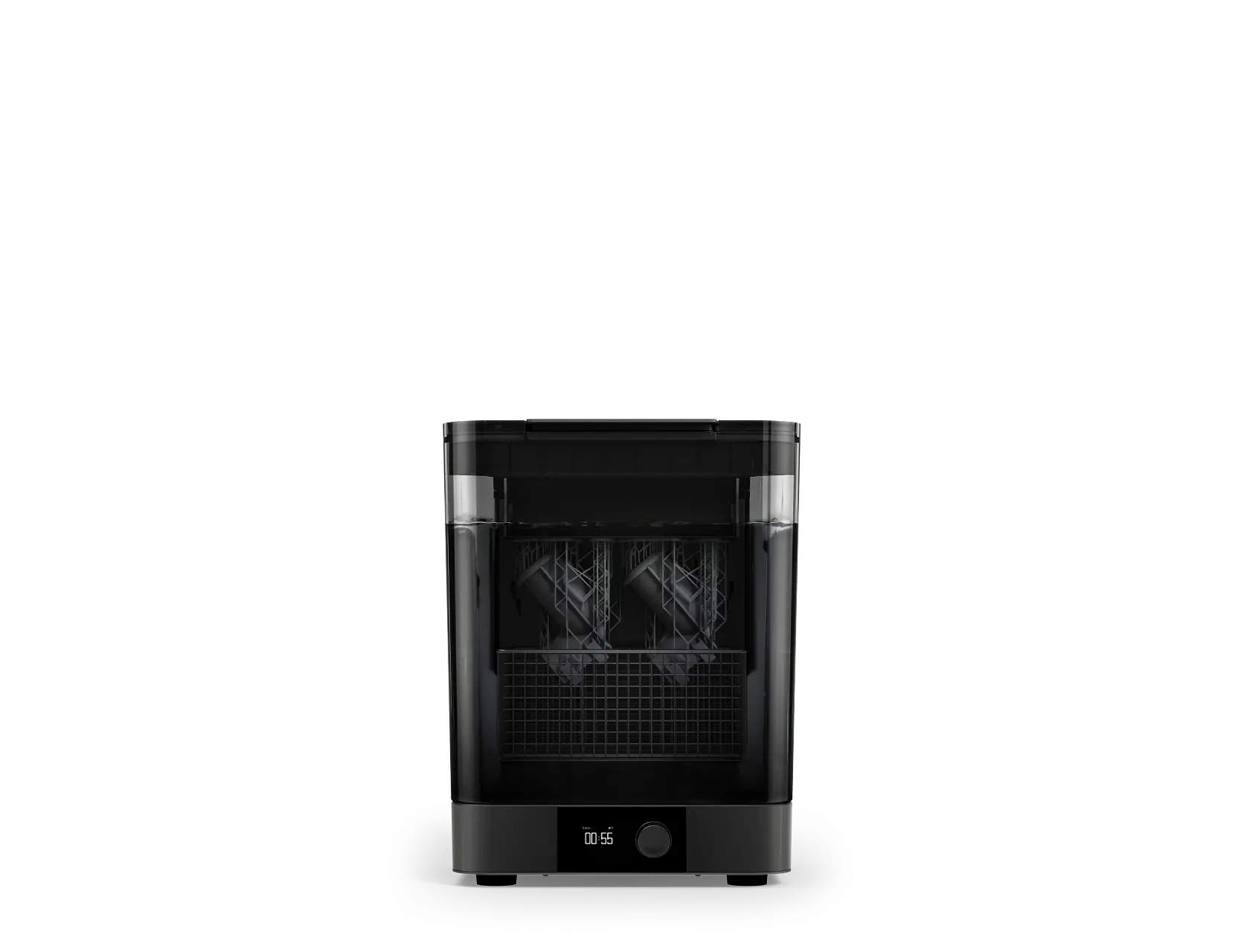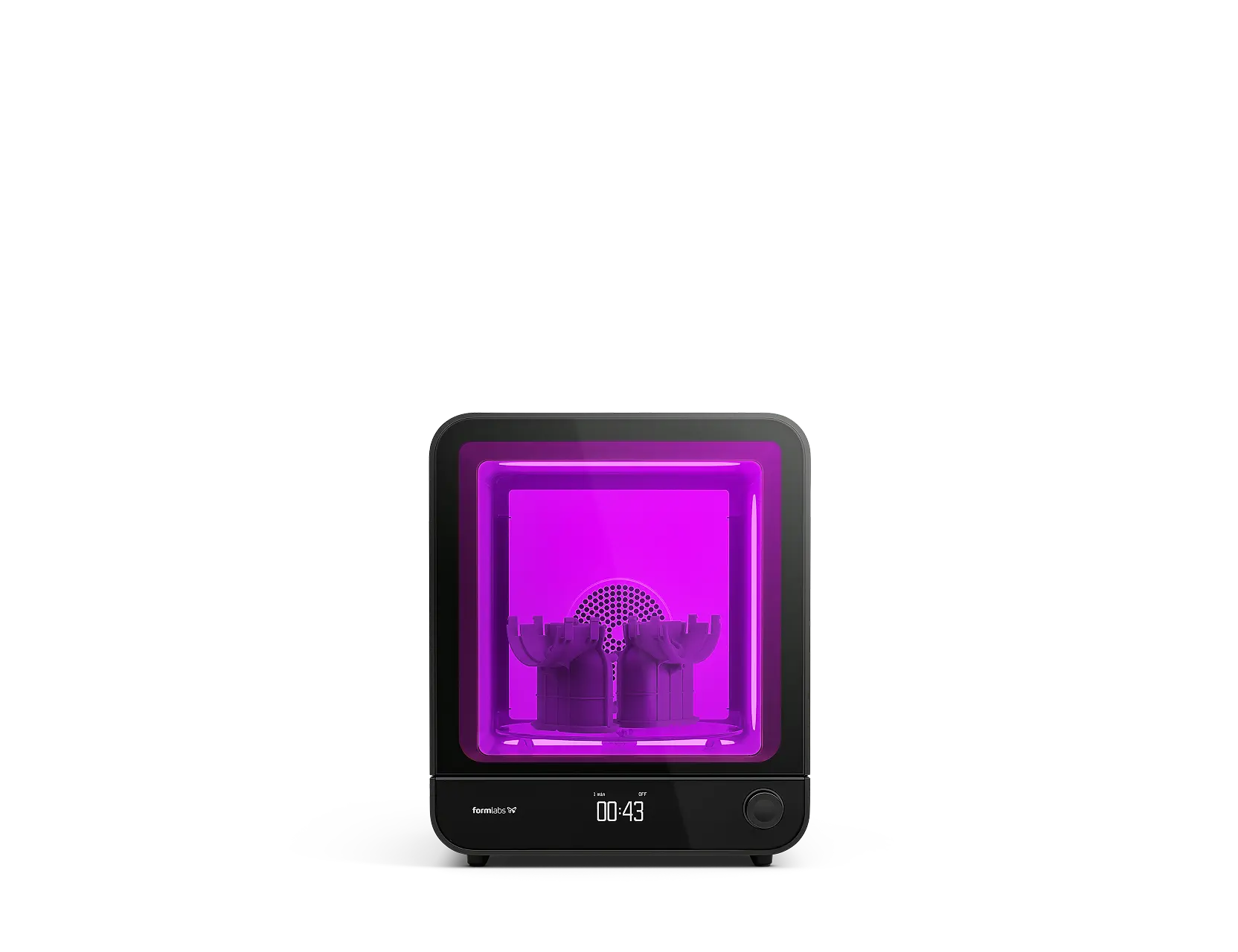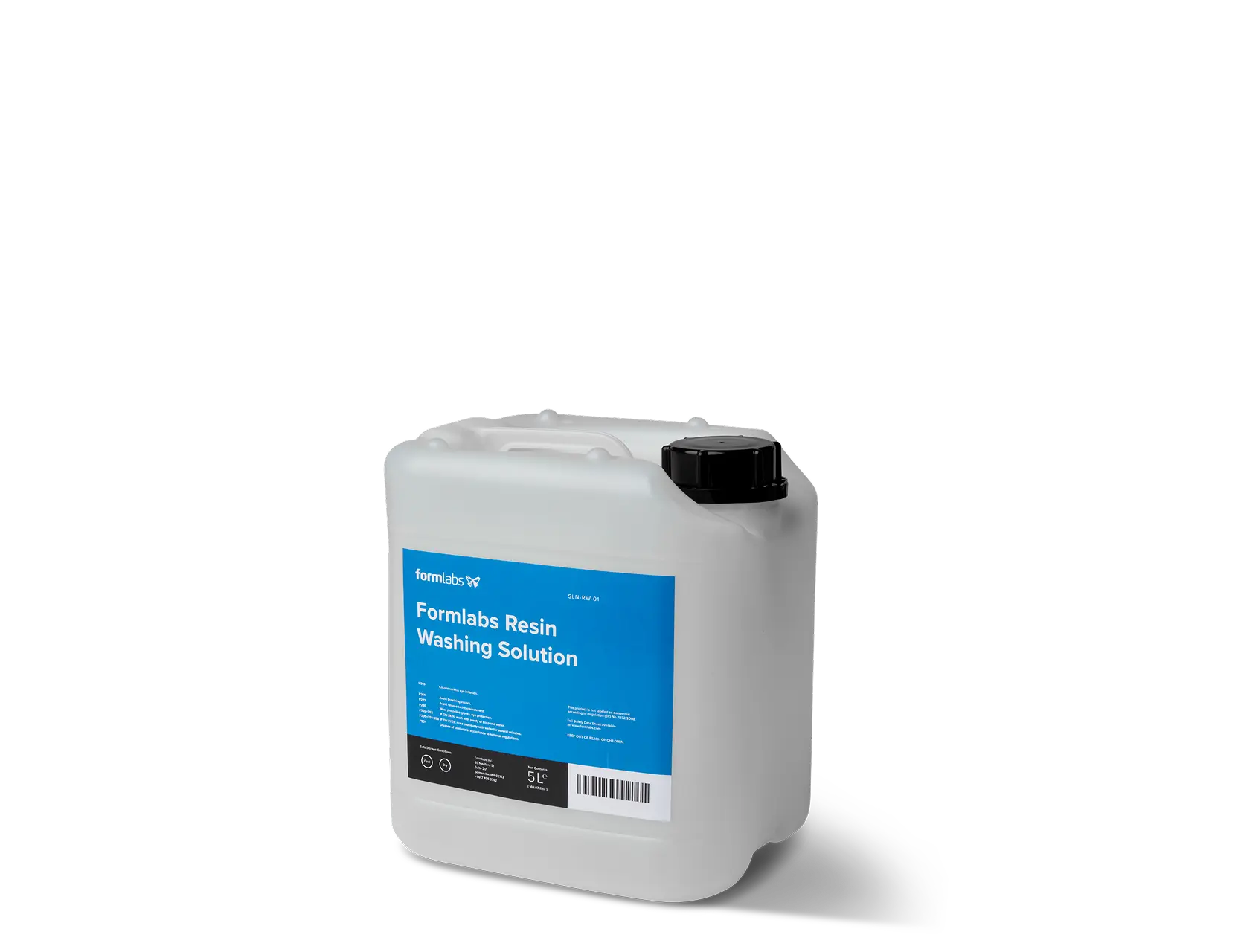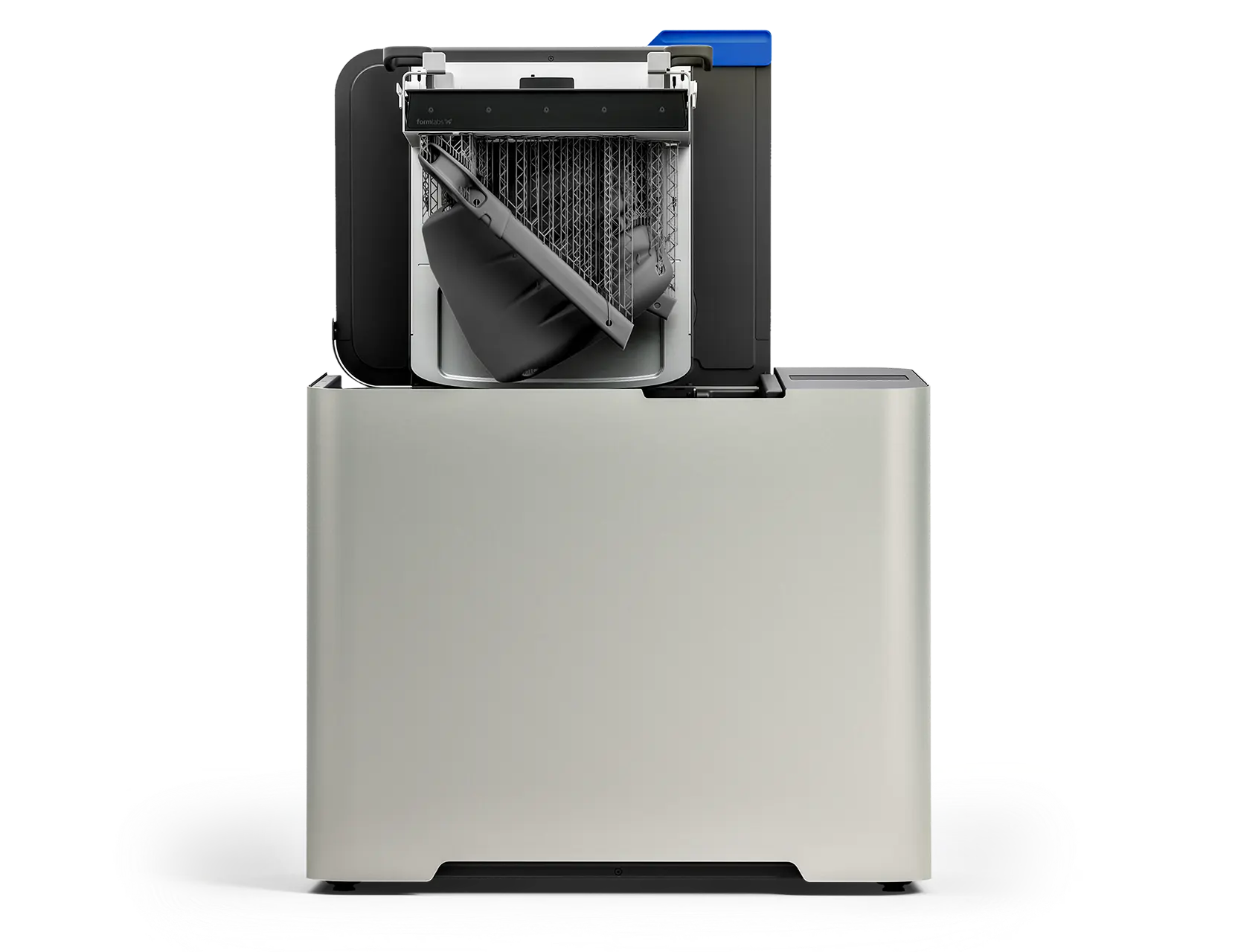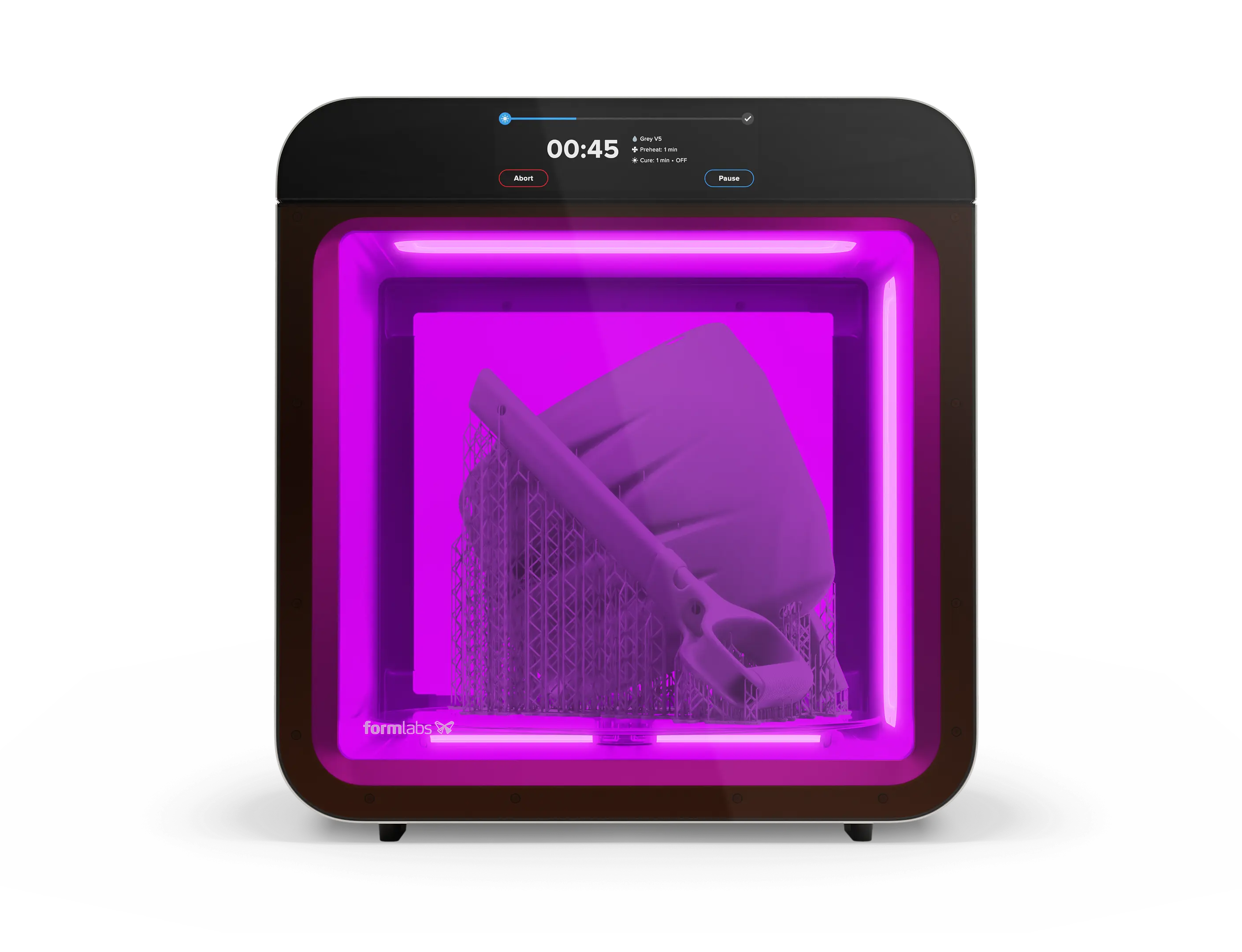Fast, Clean SLA Post-Processing
From print to final part in as little as 11 minutes*
2 hours
or less
5-10
minutes
1-15
minutes
Effortless, Mess-Free Cleaning for Perfect Parts
Washing
How the Wash Works
Form Wash and Form Wash L provide thorough cleaning with powerful agitation to ensure residual resin is completely removed. After the preset wash cycle, the parts are automatically lifted from the bath to air dry.

Washing
Powerful Agitation
Let Form Wash auto-clean your parts faster with powerful agitation to clear every nook and cranny.
Washing
Adaptable to Build Platforms
Seamlessly switch between build platforms with adjustable platform mounts, configurable at various heights and widths.
Washing
Flexible Solvent Volume
Tailor the solvent volume to the size and quantity of your parts. Use lower solvent quantities for smaller parts and builds to increase resource efficiency.
Washing
Compatible With Variety of Solvents
Our recommendation is to use IPA for the best cleaning experience. Alternative solvents such as TPM and Formlabs Resin Washing Solution are also compatible with Form Wash.



Optimal Material Properties in Record Time
Curing
How the Cure Works
Form Cure and Form Cure L use powerful LEDs, convective heating, and validated presets to achieve optimal mechanical properties with speed and precision.

Curing
Why Post-Curing Matters
Post-curing improves your part on a molecular level. 405 nm light initiates a reaction that cross-links the individual polymers, creating an interconnected, isotropic, and 100% dense final part.
-Higher strength and stiffness
-Higher surface hardness
-Higher toughness
-Higher temperature resistance
-Better creep resistance
Curing
Blazing Fast Curing, Nearly Instant Heat Up
Post-cure general purpose resins in just 60 seconds or engineering resins in less than 15 minutes, with just 60 seconds required to heat to 60 °C.
Curing
Consistent, Validated Results
48 LED array and convective heating system ensure uniform light and heat exposure, delivering 14.5 mW/cm² irradiance and a maximum temperature of 100 °C.
Curing
Post-Cure Full-Size Form 4 and Form 4L Prints
Designed to fit any part on the Form 4 or Form 4L, with a 235 mm turntable for Form Cure and a 404 mm turntable for Form Cure L.
Curing
Easier than Ever
Pre-programmed cure cycles, an easily cleaned glass turntable, and side-hinged door to allow easy access within a compact footprint.


Outstanding Finish and Performance
Smooth Surfaces With Crisp Details
- Unparalleled surface finish
- No visible layer lines
- Accurate details down to 50 µm
Superior Mechanical Properties
- Thermoset plastics that never melt
- Strong and stiff engineering materials
- Soft elastomers with good tear strength
100% Dense and Isotropic
- Equal strength in all directions
- Fully dense parts
- Watertight and airtight
Set It and Forget It
To Unlock Peak Performance
Choose your Ecosystem
For Form 4 and Form 4L

Form 4 Package
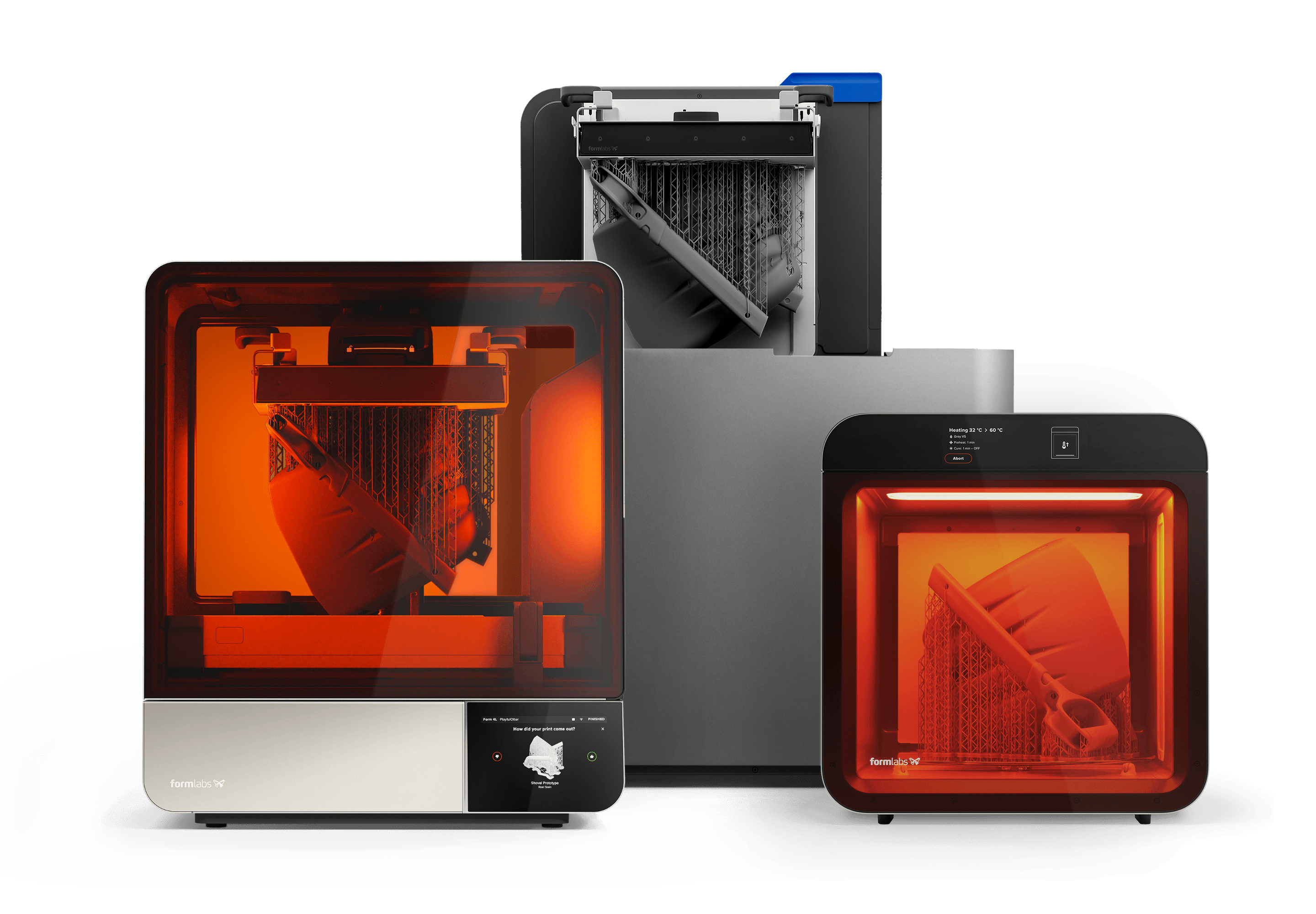
Form 4L Package
* Based on a five minute wash, five minute dry, and one minute cure for General Purpose resins
